
Liquid: The Delightful and Dangerous Substances That Flow Through Our Lives
by
Mark Miodownik
Published 5 Sep 2018
In their perfect cup of tea, you put the tea in first, and then the milk. George Orwell was in this camp, arguing that this allows you to add exactly the right amount of milk for your preferred level of creaminess. You might doubt whether adding the milk before or after makes any difference to the taste – it being such a subtle difference. But in his book The Design of Experiments, Ronald Fisher investigated this question rigorously, inventing new statistical methods to do so. In his randomized tasting experiments, he found that, yes, people can taste the difference between adding milk before or after the tea. The methods described by Ronald Fisher revolutionized the mathematical discipline of statistics.
…
Perhaps it will no longer involve the props of life jackets, oxygen masks and seatbelts – but we will always need ceremonies to celebrate the dangerous and delightful power of liquids. Further Reading Ball, Philip, Bright Earth: Art and the Invention of Colour, Vintage Books (2001) Faraday, Michael, The Chemical History of a Candle, Oxford University Press (2011) Fisher, Ronald, The Design of Experiments, Oliver and Boyd (1951) Jha, Alok, The Water Book, Headline (2016) Melville, Herman, Moby-Dick, Penguin Books (2001) Mitov, Michel, Sensitive Matter: Foams, Gels, Liquid Crystals, and Other Miracles, Harvard University Press (2012) Pretor-Pinney, Gavin, The Cloudspotter’s Guide, Sceptre (2007) Roach, Mary, Gulp: Adventures on the Alimentary Canal, Oneworld (2013) Rogers, Adam, Proof: The Science of Booze, Mariner Books (2015) Salsburg, David, The Lady Tasting Tea: How Statistics Revolutionized Science in the Twentieth century, Holt McDougal (2012) Spence, Charles, and Bentina Piqueras-Fiszman, The Perfect Meal: The Multisensory Science of Food and Dining, Wiley–Blackwell (2014) Standage, Tom, A History of the World in Six Glasses, Walker (2005) Vanhoenacker, Mark, Skyfaring: A Journey with a Pilot, Chatto & Windus (2015) Picture Credits Here: Pond skater.
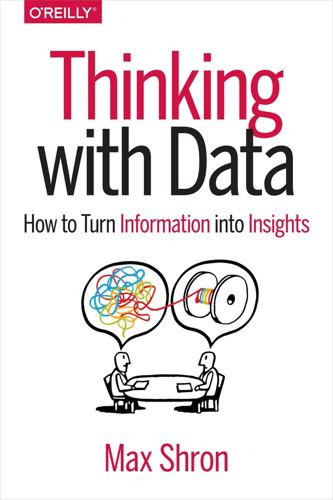
Thinking with Data
by
Max Shron
Published 15 Aug 2014
Second, we need to decide if we are interested in subjective measurement (like a survey), if we are interested in objective measurement (like the number of applications for a given job), or if we want to run an experiment. We could post the same job description but only show postings with flexible time to half of the people who visit a job site. There are certain reasons to find each of these compelling, ranging from the theory of survey design to mathematical rules for the design of experiments. Thinking concretely about the argument made by a project is a valuable tool for orienting ourselves. Chapter 3 goes into greater depth about what the parts of an argument are and how they relate to working with data. Arguments occur both in a project and around the project, informing both their content and their rationale.

The Book of Why: The New Science of Cause and Effect
by
Judea Pearl
and
Dana Mackenzie
Published 1 Mar 2018
Because Z isn’t a perfect measure of M, some of the influence of X on Y might “leak through” if you control for Z. Nevertheless, controlling for Z is still a mistake. While the bias might be less than if you controlled for M, it is still there. For this reason later statisticians, notably David Cox in his textbook The Design of Experiments (1958), warned that you should only control for Z if you have a “strong prior reason” to believe that it is not affected by X. This “strong prior reason” is nothing more or less than a causal assumption. He adds, “Such hypotheses may be perfectly in order, but the scientist should always be aware when they are being appealed to.”
…
., on, 87–88 reduction of, 85 in science, 6, 84–85 See also Big Data David, Richard, 187 Dawid, Phillip, 237, 350 de Fermat, Pierre, 4–5 de Moivre, Abraham, 5 death, proximate cause of, 288 decision problem, 238–239 decoding, 125–126, 127 (fig.), 128 deconfounders, 139–140 back-door paths for, 158–159 in intervention, 220 deconfounding games, 159–165 deduction, induction and, 93 deep learning, 3, 30, 359, 362 Democritus, 34 The Design of Experiments (Cox), 154 developmental factors, of guinea pigs, 74–76, 75 (fig.) Dewar, James, 53 Diaconis, Persi, 196 difference, in coefficients, 327 direct effect, 297, 300–301, 317–318 in causal diagram, 320–321 of intervention, 323–324 in mediation formula, 333 mediators and, 326, 332 See also indirect effects; natural direct effect The Direction of Time (Reichenbach), 199 discrimination, 311–312, 315–316 DNA test, 94–95, 122, 123 (fig.), 124, 342 do-calculus, 241–242 backdoor criterion in, 234 completeness of, 243–244 decision problem in, 238–239 elimination procedure in, 231–232 front-door adjustment in, 235–237, 236 (fig.)
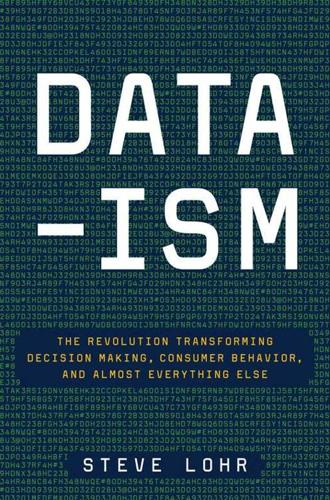
Data-Ism: The Revolution Transforming Decision Making, Consumer Behavior, and Almost Everything Else
by
Steve Lohr
Published 10 Mar 2015
In the spring of 2012, he taught a course in data science at the University of California at Berkeley. His first talk included a brisk yet comprehensive tour of the pertinent literature. His survey stretched from the first half of the twentieth century and the English statistician and biologist Ronald A. Fisher, who did pioneering work on the design of experiments using agricultural and gene data; to Hans Peter Luhn, the IBM scientist whose paper in the late 1950s imagined a computerized “business intelligence” system for mining information to improve business decisions; to contemporary computer scientists who have authored important works on data and discovery—Jim Gray, Tom Mitchell, Randy Bryant, and Peter Norvig.

The Perfect Bet: How Science and Math Are Taking the Luck Out of Gambling
by
Adam Kucharski
Published 23 Feb 2016
In which case, a treatment ends up concentrated only in one area, and we have a pretty lousy experiment. Suppose we want to test four treatments across sixteen trial sites, arranged in a four-by-four grid. How can we scatter the treatments across the area without risking all of them ending up in the same place? In his landmark book The Design of Experiments, Fisher suggested that the four treatments be distributed so that they appear in each row and column only once. If the field had good soil at one end and poor land at the other, all treatments therefore would be exposed to both conditions. As it happened, the pattern Fisher proposed had already found popularity elsewhere.
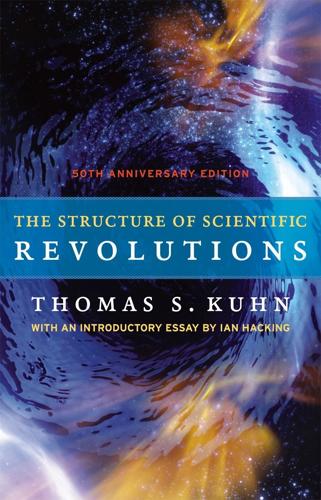
The Structure of Scientific Revolutions
by
Thomas S. Kuhn
and
Ian Hacking
Published 1 Jan 1962
Or it might be due to a change in the specific heat of gases with changing pressure. And there were several other explanations besides. Many experiments were undertaken to elaborate these various possibilities and to distinguish between them; all these experiments arose from the caloric theory as paradigm, and all exploited it in the design of experiments and in the interpretation of results.8Once the phenomenon of heating by compression had been established, all further experiments in the area were paradigm-dependent in this way. Given the phenomenon, how else could an experiment to elucidate it have been chosen? Turn now to the theoretical problems of normal science, which fall into very nearly the same classes as the experimental and observational.
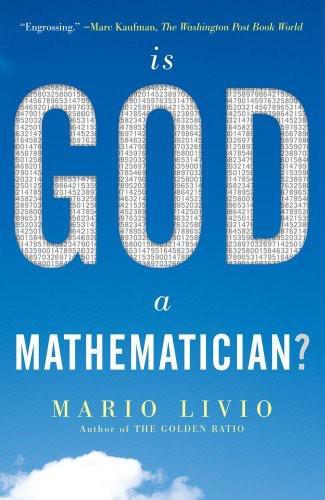
Is God a Mathematician?
by
Mario Livio
Published 6 Jan 2009
An English translation can be found on the Web page created by R. B. Blumberg at http://www.mendelweb.org. While some questions related to the accuracy: See Fisher 1936, for example. the influential British statistician: For a brief description of some of his work see Tabak 2004. Fisher wrote an extremely original, nontechnical article about the design of experiments entitled “Mathematics of a Lady Tasting Tea” (see Fisher 1956). in his book Ars Conjectandi: For a superb translation see Bernoulli 1713b. He then proceeded to explain: Reprinted in Newman 1956. Shaw once wrote an insightful article: The article “The Vice of Gambling and the Virtue of Insurance” appears in Newman 1956.
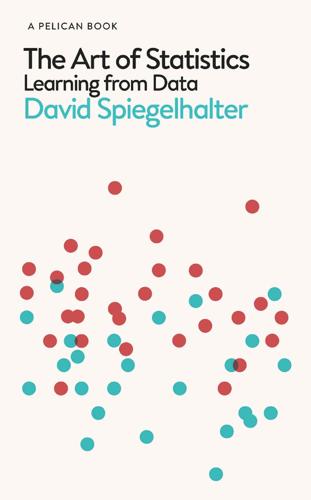
The Art of Statistics: Learning From Data
by
David Spiegelhalter
Published 14 Oct 2019
Margins of error for homicide statistics: https://www.ons.gov.uk/peoplepopulationandcommunity/crimeandjustice/compendium/focusonviolentcrimeandsexualoffences/yearendingmarch2016/homicide#statistical-interpretation-of-trends-in-homicides. CHAPTER 10: ANSWERING QUESTIONS AND CLAIMING DISCOVERIES 1. J. Arbuthnot, ‘An Argument for Divine Providence …’, Philosophical Transactions 27 (1710), 186–90. 2. R. A. Fisher, The Design of Experiments (Oliver and Boyd, 1935), p. 19. 3. There are 54 × 53 × 52 … × 2 × 1 permutations, which is termed ‘54 factorial’ and denoted 54!. This is roughly 2, with 71 zeros following it. Note that the number of possible ways a deck of 52 cards can be dealt is 52!, and so even if we dealt a million million hands a second, the number of years it would take to work through all possible permutations has 48 zeros after it, whereas the age of the universe is only 14,000,000,000 years.

The Art of Statistics: How to Learn From Data
by
David Spiegelhalter
Published 2 Sep 2019
Margins of error for homicide statistics: https://www.ons.gov.uk/peoplepopulationandcommunity/crimeandjustice/compendium/focusonviolentcrimeandsexualoffences/yearendingmarch2016/homicide#statistical-interpretation-of-trends-in-homicides. CHAPTER 10: ANSWERING QUESTIONS AND CLAIMING DISCOVERIES 1. J. Arbuthnot, ‘An Argument for Divine Providence…’, Philosophical Transactions 27 (1710), 186–90. 2. R. A. Fisher, The Design of Experiments (Oliver and Boyd, 1935), p. 19. 3. There are 54 × 53 × 52…× 2 × 1 permutations, which is termed ‘54 factorial’ and denoted 54!. This is roughly 2, with 71 zeros following it. Note that the number of possible ways a deck of 52 cards can be dealt is 52!, and so even if we dealt a million million hands a second, the number of years it would take to work through all possible permutations has 48 zeros after it, whereas the age of the universe is only 14,000,000,000 years.
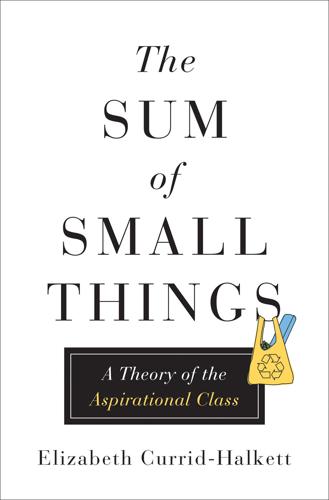
The Sum of Small Things: A Theory of the Aspirational Class
by
Elizabeth Currid-Halkett
Published 14 May 2017
Bristol protested, explaining that she liked her “milk in first,” as the tea tasted better that way. Despite skeptical resistance from those in attendance, Bristol insisted she could tell the difference. Ronald Alymer Fischer, one of those present, who would later go on to become “Sir Fischer” and the godfather of modern empirical statistics with his famous book The Design of Experiments, had an idea. Surely, if eight cups of tea were poured, four with “milk in first” and the other four with tea in first, and the lady identified them correctly then she would be proven right (her chances of merely guessing by chance would be 1 in 70). Fischer, like everyone else present, believed Bristol would likely fail the test.

Trick or Treatment: The Undeniable Facts About Alternative Medicine
by
Edzard Ernst
and
Simon Singh
Published 17 Aug 2008
In fact, there is a good scientific reason why the two forms of tea should taste different. Milk added to tea leads to a less satisfying cup, because the milk becomes superheated and this causes proteins in the milk to deteriorate – these proteins then taste slightly sour. Fisher used this simple example as the basis for an entire book on scientific testing, The Design of Experiments, which went into great detail about the subtleties of trials. Despite its sheer simplicity and powerful ability to get to the truth, some alternative therapists argue that the clinical trial is a harsh test, which is somehow biased against their treatments. But that sort of attitude betrays a skewed understanding of the clinical trial, which merely seeks to establish the truth, regardless of the type of treatment being examined.
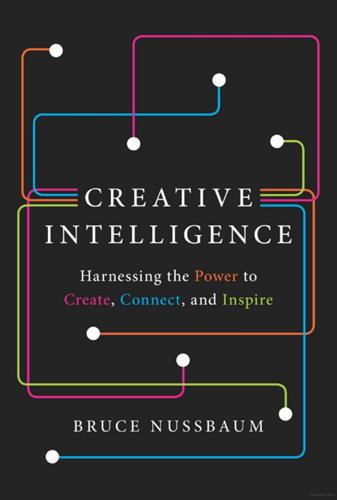
Creative Intelligence: Harnessing the Power to Create, Connect, and Inspire
by
Bruce Nussbaum
Published 5 Mar 2013
David Kelley, Tim Brown, and Bill Moggridge have been key tutors in my learning about design, innovation, and creativity. David is not only a cofounder of IDEO; he founded the extraordinary d.school at Stanford. He and Tim are on the cover of what is probably my most impactful cover story, “The Power of Design.” David, Tim, and Bill believed that design should go beyond the physical to include the design of experiences, services, and even social systems, such as health and education. They codified that approach into the concept of design thinking, the scaffolding upon which Creative Intelligence is built. When Bill Moggridge took over the leadership of the Cooper Hewitt National Design Museum, I got to know the humor and grace of the man who designed one of the first laptop computers and fathered the field of interaction design.
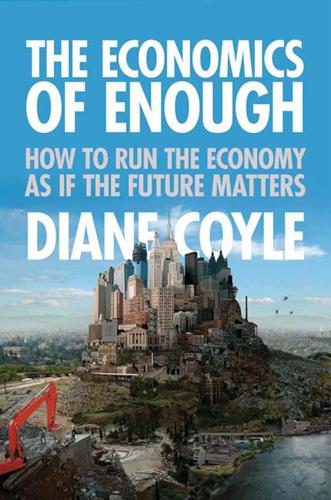
The Economics of Enough: How to Run the Economy as if the Future Matters
by
Diane Coyle
Published 21 Feb 2011
For one thing, other experimental evidence indicates that humans behave selfishly in other contexts. In some experiments, economists have shown that markets operate exactly as conventional economic models based on rational self-interest would predict.3 For another thing, subtle changes in the design of experiments can change the outcomes dramatically, as economist John List has documented.4 List cautions against drawing hard and fast conclusions about human nature from the results available to us now: “A first lesson that I take from this body of research is that what we do not know dwarfs what we know.”5 Having admired this modesty in an economist, however, there is a good amount of experimental evidence from a wide range of contexts that people do have an innate sense of fairness.
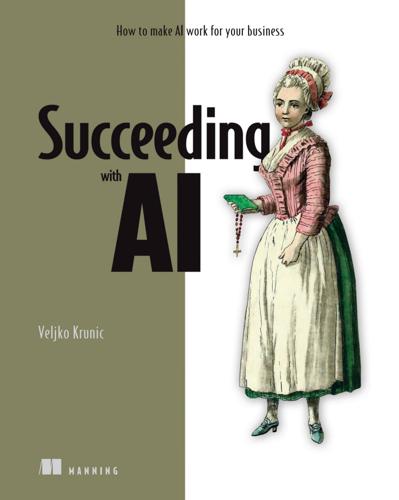
Succeeding With AI: How to Make AI Work for Your Business
by
Veljko Krunic
Published 29 Mar 2020
For teams just starting with AI and sensitivity analysis, my advice is to not worry about interactions initially and concentrate on what happens with the ML pipeline when you change only one factor at a time. Two Six Sigma resources from ASQ [21,22] give some starting points on the process and a profile of people who have good experience in designing experiments for detecting interactions, which brings us to the broader topic of the design of experiments ([24]). 180 7.3.3 CHAPTER 7 Guiding an AI project to success Should I use design of experiments? Design of experiments (DOE) [24] is a methodology that has been successfully used in the area of process engineering for decades to improve quality, cost, and the efficiency of processes such as manufacturing physical objects.
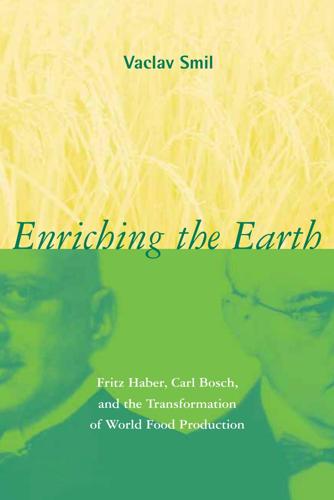
Enriching the Earth: Fritz Haber, Carl Bosch, and the Transformation of World Food Production
by
Vaclav Smil
Published 18 Dec 2000
In 1843 John Bennet Lawes (fig. 1.5, an Eton- and Oxford-educated landowner, began experimenting with unfertilized and variously fertilized crops on Broadbalk field in Rothamsted, a family estate in Hertfordshire he inherited in 1834. In the same year he invited Joseph Henry Gilbert, a young chemist with a doctorate from Liebig’s laboratory, to help with the design of experiments and to perform the necessary chemical analyses, a cooperative effort that ended only with Lawes’s death.45 Figure 1.5 John Bennet Lawes (1814–1900). Courtesy of Rothamsted Experimental Station, Harpenden, Hertfordshire, England. 12 Chapter 1 In order to test the validity of Liebig’s mineral theory, Lawes and Gilbert began continuous cultivation of wheat on plots receiving either no fertilizer or the following combinations of nutrients: minerals only (P, K, Na, Mg), minerals with nitrogen, or farmyard manure.

The Rise and Fall of Modern Medicine
by
M. D. James le Fanu M. D.
Published 1 Jan 1999
Fisher could not believe that there would be any difference in the taste and when the woman suggested an experiment be performed, he was enthusiastic. An immediate trial was organised, the woman confidently identified more than enough of the cups of tea into which the tea had been poured first to prove her case. In his classic book The Design of Experiments, published in 1935, Fisher used this example ‘to state the terms of the experiment minutely and distinctly; predicted all possible results, ascertaining by sensible reasoning, what probability should be assigned to each possible result under the assumption that the woman was guessing’.5 Thus Greenwood’s main intellectual legacy, which he was to pass on to Bradford Hill, was essentially two-fold: the historical contribution of statistical methods to elucidating the cause of substantial public health problems; and the importance of conducting properly designed experiments to test whether a new treatment was effective.

Statistics in a Nutshell
by
Sarah Boslaugh
Published 10 Nov 2012
This is a very readable and comprehensive introduction to research and experimental design with a focus on educational and psychological topics. Fisher, R.A. 1990. Statistical Methods, Experimental Design, and Scientific Inference: A Re-issue of Statistical Methods for Research Workers, the Design of Experiments, and Statistical Methods and Scientific Inference. Oxford: Oxford University Press. If you want to read the original rationale for many of the designs and issues described in this chapter, there is no better place than the original source. The Framingham Heart Study. http://www.framinghamheartstudy.org/.